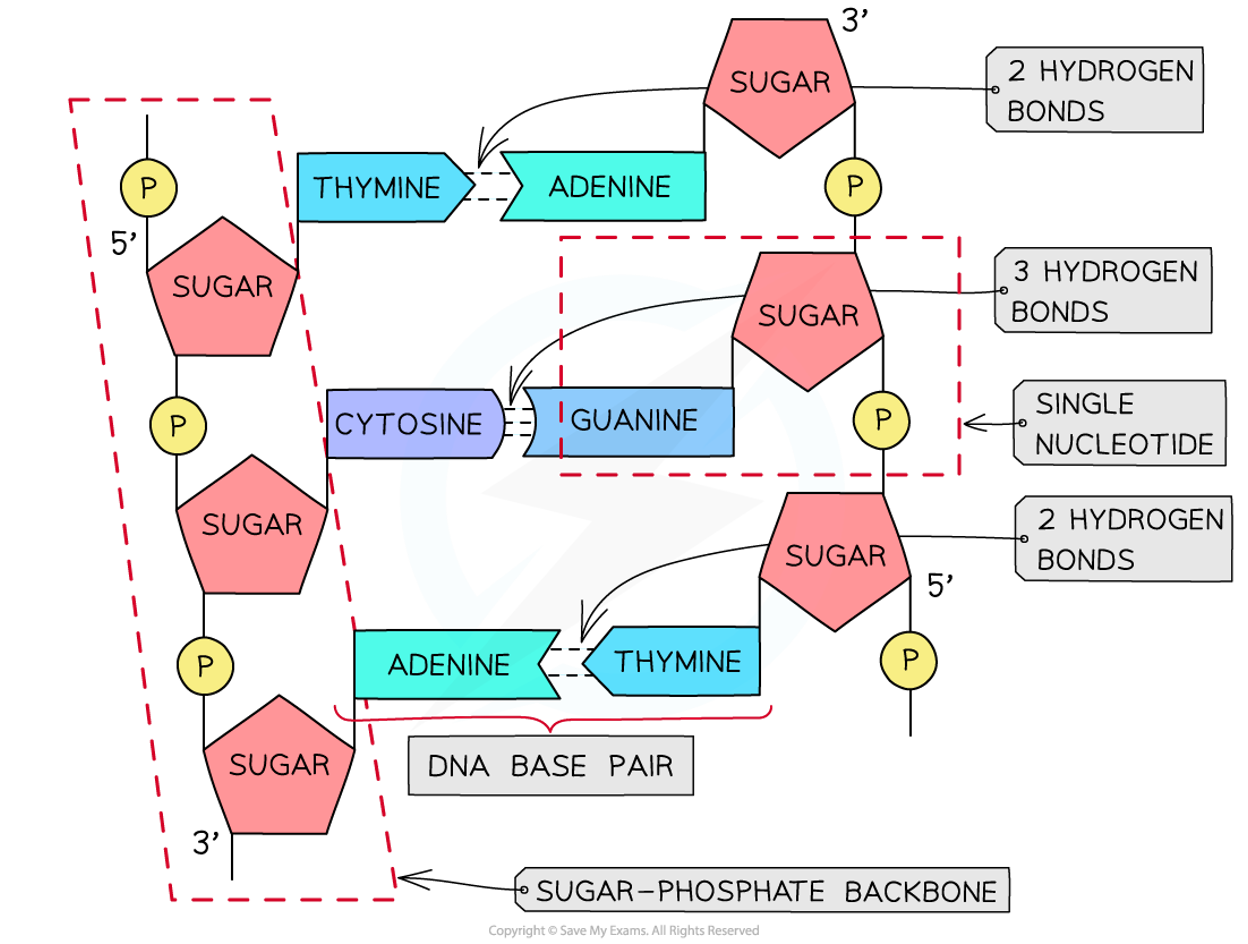DNA structure T2 W10
1/7
There's no tags or description
Looks like no tags are added yet.
Name | Mastery | Learn | Test | Matching | Spaced |
|---|
No study sessions yet.
8 Terms
What is DNA (deoxyribonucleic acid)
A molecule found in the cells of all organism and is found in the nucleus and the mitochondria of the cell.

Role of DNA
DNA contains the genetic information that determines how a cell functions. DNA is a chemical code that the cell uses to produce proteins, e.g., enzymes.
Structure of DNA
•DNA is an example of a polymer, a molecule made up of many repeating small units – in this case the small repeating units are nucleotides.
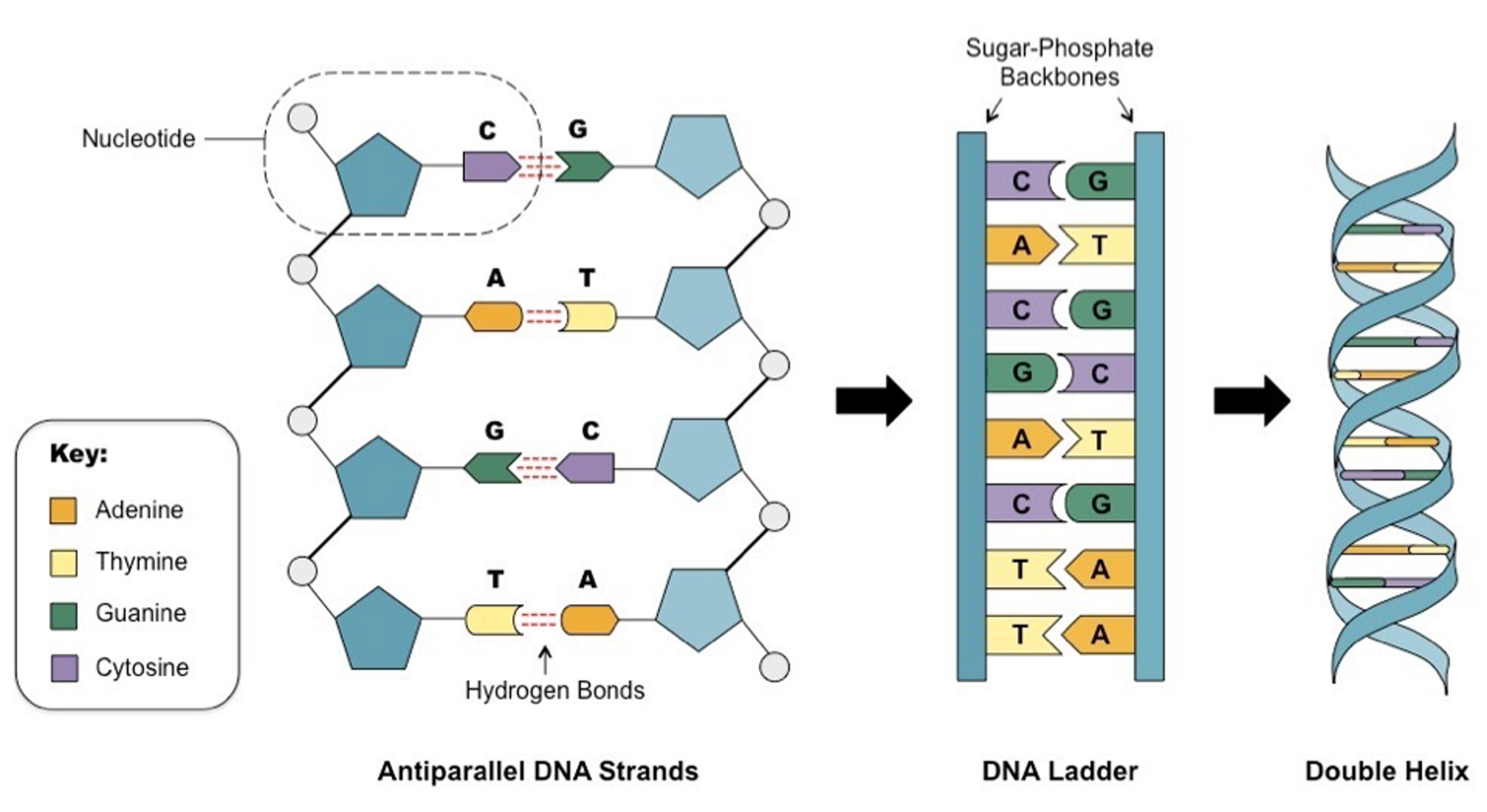
DNA has 4 nitrogenous bases
adenine (A), thymine (T), cytosine (C) and guanine (G).
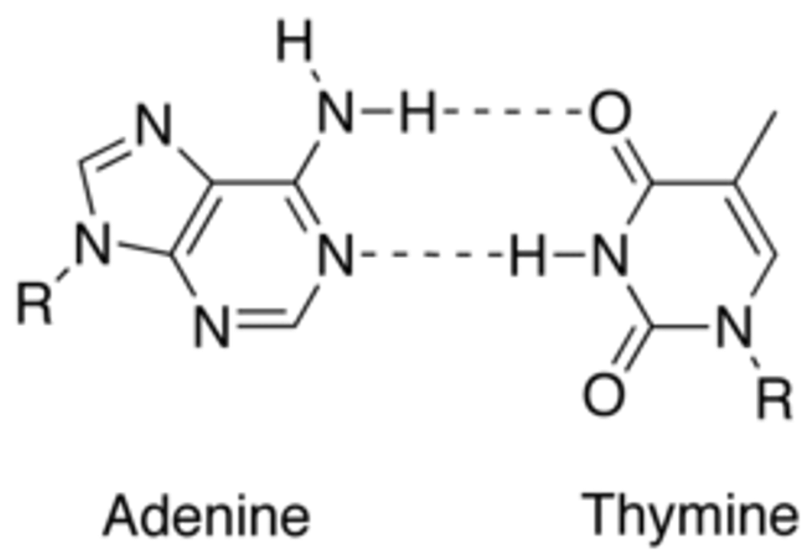
DNA complementary base pairing
Bases only link together in a specific way
A—T
C—G
The bond between pairs are is a weak hydrogen bond.
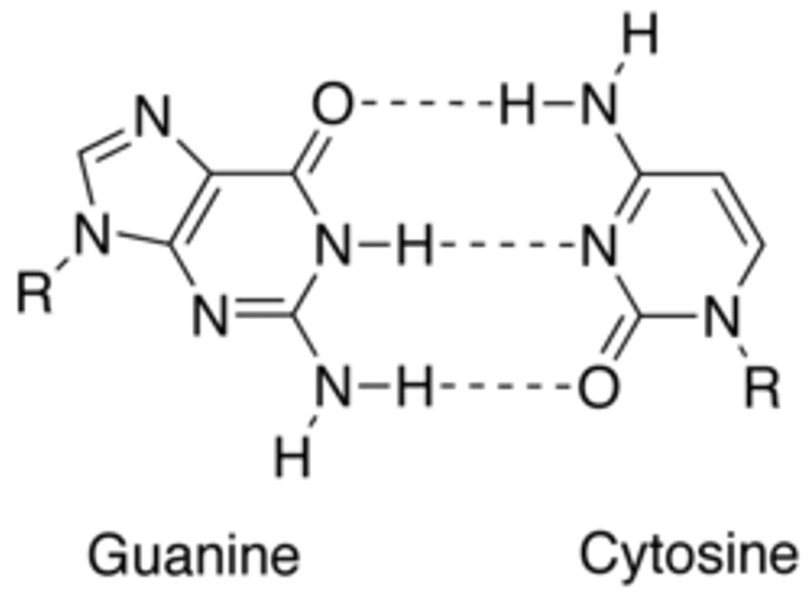
How the nucleotides bond
•The sugar molecule of one nucleotide bonds to the phosphate group of another one.
•This forms a long chain of alternating sugars and phosphates, with side chains of bases.

Importance of the sugar (deoxyribose)
•The sugar in each nucleotide is very important as both the nitrogenous base and phosphate groups attach to it.
•The sugar in DNA is called deoxyribose.
•You can see on the diagram that the highlighted ‘H’ does not have an oxygen bonded to this hydrogen, thus, the sugar lacks an oxygen atom or is ‘deoxy’.
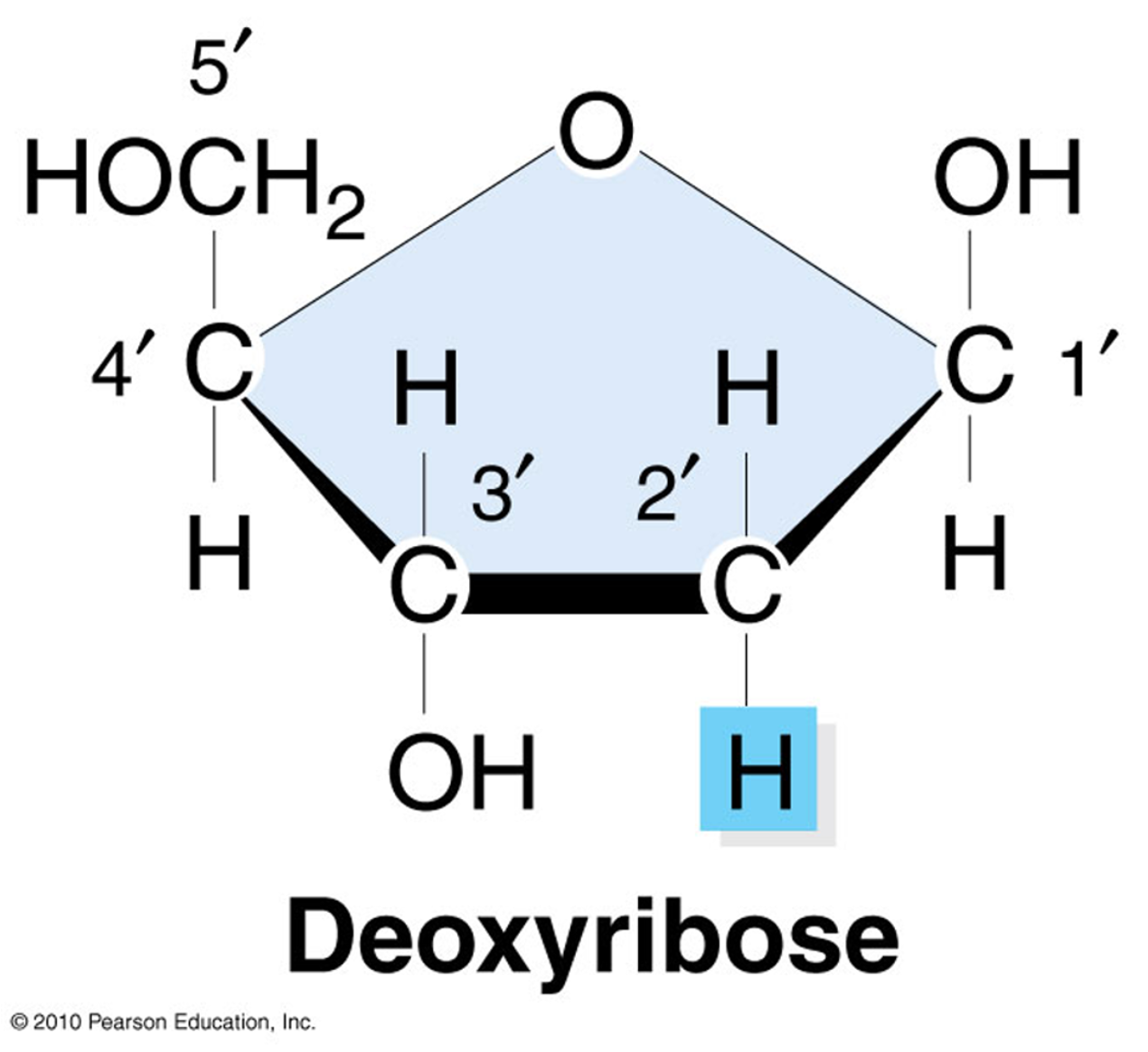
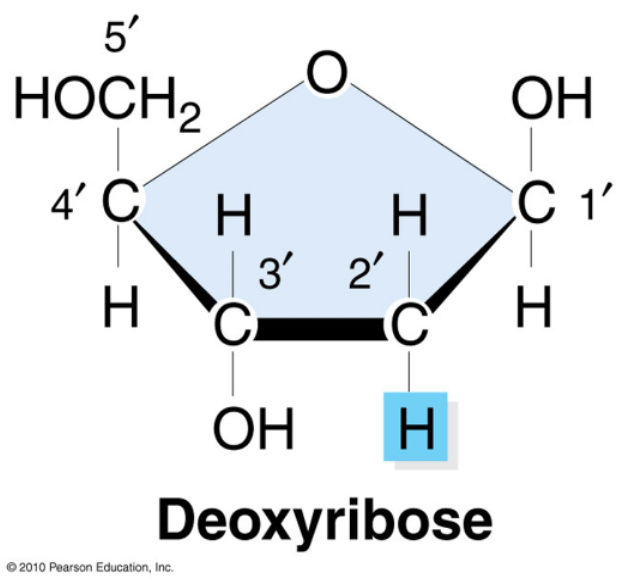
chemical structure of deoxyribose (sugar)
•We number each of these carbon atoms in the sugar, so we know which part of the molecule other molecules bond to, i.e., 1’, 2’, 3’, 4’, 5’ (this is said ‘one prime’, ‘two prime’, etc).
⚬Number these carbon atoms on your diagram.
•Notice that the nitrogenous base attaches to the 1’ carbon.
•The phosphate group will attach to the 5’ and 3’ carbon.
•The two strands of DNA run in opposite directions to each other and are thus anti-parallel.
•The nucleotides form the basis of a ladder-like molecule where the sugar/phosphate forms the uprights, and the joined nitrogenous base pairs form the rungs of the ladder that twists up in a spiral shape to form a double helix structure.
